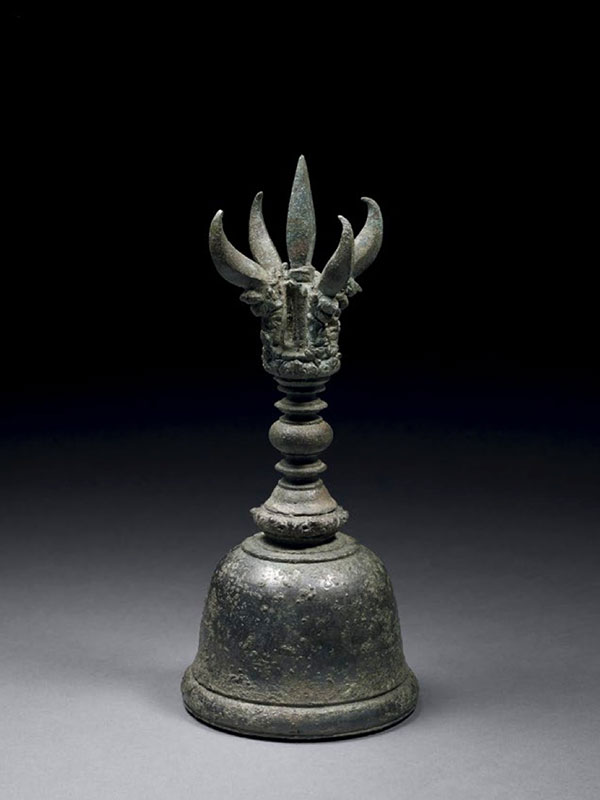Bronze vajraghanta hand bell
A cast bronze hand bell. The top of the handle has a five-pronged vajra (lightning bolt). The four outer prongs curve outward and have a rich decoration on their base possibly representing Buddhist elements. A central stem connects the handle to the bell which has a rich smooth surface. The bronze has an attractive, grey-green patina.
A vajraghanta bell is a bell with a handle in the shape of a vajra and is the most sacred of bells.[1] The vajra seen at the top of the bell is similar to those found in Tibet and used by high-ranking priests. The great care taken with the production of Javanese bronze bells suggests they were highly important to religious life. They were produced in many forms and the ringing of the bell invokes and summons the gods and calls worshippers for prayer. Javanese bells were used in both Hindu and Buddhist rituals. A comparable vajraghanta hand bell is in the Metropolitan Museum, New York.[2]
- Lerner, M., Kossak, S., The Lotus Transcendent, Indian and Southeast Asian Art from the Samuel Eilenberg Collection, New York 1991, no. 165, p. 208.
- Lerner, M., Kossak, S., op cit, no. 167, p. 210.

